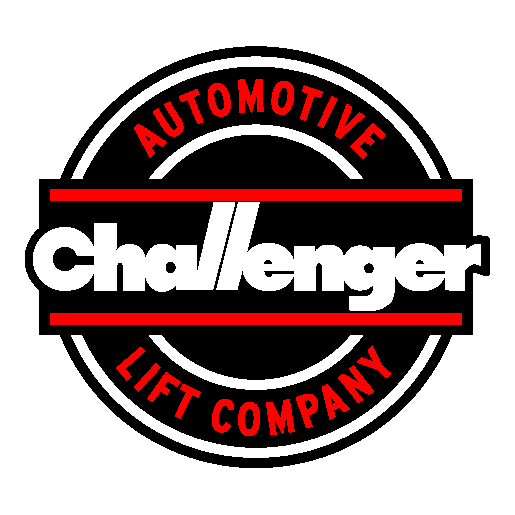Lifting today’s larger trucks, vans, and electric vehicles (EVs) requires more than raw power—it demands precision, safety awareness, and technical expertise to ensure flawless execution. As shops face larger, more complex vehicles, technicians need targeted training to tackle unique challenges, from identifying lift points to managing weight distribution. Proper instruction builds confidence and minimizes risks, transforming service bays into hubs of efficiency and safety. The LE12-3S Two-Post Lift from Challenger Lifts delivers the robust performance needed for heavy-duty applications, featuring a 12,000-lb. capacity and a durable, engineered frame. It’s an ideal platform for honing these skills, offering features that support hands-on learning and real-world application.
Training Protects the Lift—and the Technician
Handling heavy-duty vehicles introduces risks that demand careful technique, which is why correct setup and operation are crucial. Misaligned lift points or uneven loads can destabilize a vehicle, endangering technicians and equipment. Training focuses on core skills: locating OEM-specified lift points, ensuring balanced weight distribution, and maintaining a clear workspace. Technicians, for example, are trained to confirm a vehicle’s alignment before raising it, helping avoid slippage or unnecessary strain on the structure. Instruction also emphasizes adherence to safety protocols, reducing liability in high-volume shops where time constraints can lead to errors. By mastering these fundamentals, teams boost productivity while safeguarding themselves, the vehicles, and the shop’s reputation.
Leveraging the LE12-3S for Training Success
The LE12-3S is purpose-built for commercial and fleet environments, making it the perfect hands-on opportunity to train on advanced adaptability. Its symmetric lifting configuration allows trainees to practice using adjustable heavy-duty polyurethane screw pads to effectively secure diverse lift points. A single-point mechanical lock release streamlines the process of disengaging the column, with training emphasizing accurate use to allow controlled, safe releases and avoid sudden drops. With a rise height of 77.75 in. and adjustable column heights (166 or 175 in., with an optional two-foot extension), technicians can simulate lifting taller vehicles, building confidence across scenarios. The padded overhead shut-off system prevents vehicle damage, and trainees learn to monitor clearance to ensure safe operation.
Mastering the New 3-Stage Arm Upgrade
Launched by Challenger Lifts in 2025, the 3-stage front and rear arms on the LE12-3S offer a practical way to train on advanced adaptability. By increasing retraction to just 20.5 inches, these arms make it easier to reach the very specific, narrow lift points commonly found on smaller vehicles like front-wheel-drive sedans and newer EVs. At the same time, their extended adjustment range allows technicians to practice spotting larger vehicles, including full-size SUVs up to delivery trucks within rated capacity. Training should focus on leveraging the arms’ flexibility to minimize setup time while maintaining precision. The consistent low pad height ensures accessibility for low-clearance vehicles, and standard stack adapters allow practice with varied frames. Trainees can simulate lifting 25 percent more vehicle types, mastering arm adjustments for both compact cars and long-wheelbase models, reducing repositioning efforts for faster, safer workflows.
Key Technical Skills to Develop
Training on the LE12-3S should include its technical specs to ensure operational fluency. With a drive-thru clearance of 103 in. and inside columns at 115 in., technicians must assess shop space compatibility. The 2HP motor (208-230 volts) achieves a 61-second rise, so trainees should practice timing workflows to optimize throughput. The overhead shut-off, at 159.5 or 168.5 in., requires vigilance to prevent vehicle contact. ALI/ETL certification underscores compliance, and trainees should consult the Installation, Operation & Maintenance Manual for setup and maintenance protocols. These skills ensure lifts are performed within design parameters, enhancing safety and equipment longevity.
Incorporating Accessories into Training
Optional accessories provide hands-on learning for specialized tasks. The electric vehicle footpad kit and heavy-duty footpad 12K allow trainees to practice protecting EV batteries or reinforcing contact for heavy frames. Stack adapters (3-inch and 6-inch) extend reach, offering exercises in adapting to unique vehicle types. The air & electric workstation integrates utilities, and the light bar kit improves visibility under lifts. Training should cover selecting and applying these tools efficiently, such as using the tire tool center for wheel-related tasks or the cab-off footpad kit for specific repairs, ensuring technicians integrate accessories without complicating workflows.
Elevate Shop Capability Through LE12-3S Training
Investing in LE12-3S-specific training empowers technicians to handle diverse vehicles with precision and safety. By mastering lift configurations, arm adjustments, and safety practices, teams can maximize efficiency, extend equipment life, and reduce downtime.
To learn more about the LE12-3S from Challenger Lifts and stay informed about the 3-stage arm upgrade, visit the product page here.




